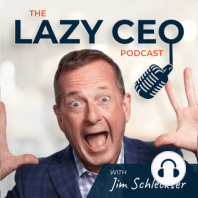27 min listen

Business Model, Capital Structure and Managing Investors
Business Model, Capital Structure and Managing Investors
ratings:
Length:
39 minutes
Released:
Jan 15, 2023
Format:
Podcast episode
Description
A conversation between Jim Schleckser and Dave Warren Jim: Today we going to talk about several important business topics for CEOs with a long-term member of The CEO project and a friend of mine, Dave Warren. Dave is a serial entrepreneur. He started and owned, a couple of different businesses, but he's kind of a student of business. Dave really appreciates business as much as I do. Tell us a little bit about that business and why you started that business versus any other business you might get into. Dave: From the time I graduated from college, I was looking for a business to buy. The day I graduated, I found a partner and tried to buy the bookstore I had been working at, but quickly realized that, even with the best of intentions, if you didn't have a little capital. Then, contrary to my dad's advice, who had a 40-year career in the oil industry. His advice was, whatever you do, don't get into this business. And of course, like every good son, I just ignored him and got into it. At the end of the day, it's what you've seen and what you grew up with. So I got into the oil field, started out in field service, then got into manufacturing, and then into distribution. And then in 1995, I was working for a company in steel distribution and went to them and said, I think there's a different way to structure this business. At the time it was very transactional. I said I think there's a different way to put supply chains in place other than this transactional model that everybody's been using. I went to the owners of that business and said, what do you think? And they said we like what we're doing. But I felt compelled to try this and so I started it with two partners. We just started doing what we did, servicing the heck out of the customers and providing solutions. And they knew they could come to us, with issues or problems or things that they were trying, to solve, and we would come up with an answer. We kept reinvesting in the business. We got up to about 70 million in revenue over about an eight- or nine-year period. At the time, there was a lot of talk about the oil industry not going to be a domestic industry anymore. So, we figured we needed to get into, either needed to be a good, small regional business or we needed to expand the business and go global. So over about a period of 24 months, we did two acquisitions, one in the US and one a UK subsidiary of a French conglomerate. We tripled the size of the business. Each one of those was doing about 70 million in revenue. We basically put together a global footprint and looked at kind of the geographies of the products on the customers, and we did a three-dimensional matrix on what we wanted the acquisitions to solve. By the time we finished that 24-month period, we had solved most of what we wanted as far as what our vision was on how to service the market. We put in supply chains, support for manufacturing and operations on a global basis for people globally building, equipment for drilling, and downhill tools. Jim: Interesting. Follow the customer, right? If I see the customer migrating, I go with them, or I don't. What was the competitive advantage compared to the transactional companies that could do exactly what you could do? They could buy and they could sell, but what made what you did differently? Was it, was there an engineering element? What were the pieces that made that business different? Dave: Back to the partnering idea. We convinced customers to let us behind the curtain, we would talk to them about their forecast, and their bill of materials, and then tried to rationalize because every part was designed kind of as a unique part. With its own unique raw material. What we tried to do was, was rationalize and consolidate their spending into a smaller number of raw material SKUs. Then we would consolidate that demand over multiple customers and try to drive everything to a consistent supply chain inventory. So, we were able to buy by doing that and with the sca
Released:
Jan 15, 2023
Format:
Podcast episode
Titles in the series (77)
Entrepreneurship - Part 1: Joel Trammell is the Founder of the Texas CEO Magazine and the Co-founder of American CEO, a company that provides educational resources for chief executive officers. He is a successful entrepreneur who has founded four businesses and served as CEO of... by The Lazy CEO Podcast